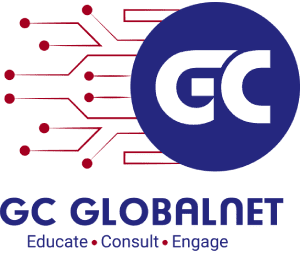Twitter Feed
Packing My Bags For Prague and Dimension Data #Perspectives2015
Prague is a beautiful city! My last time was in June 2010 when Jeremy Geelan invited me to speak at CloudExpo Europe (see my blog post and video from that…
SAP/HANA Does Big Data for National Security
Carmen Krueger, SAP NS2 SVP & GM While SAP is globally renowned as a provider of enterprise management software, the name is hardly ever associated with the spooky world of…
Be future ready: Selling to millennials and a marketplace of one
There is almost a deafening discussion going on about the self-centeredness of today’s young adults. Weather you call them Generation Y, millennials or twenty-somethings, the general refrain seems to be…
Surviving an Environment of IT Change
“The Federal government today is in the midst of a revolution. The revolution is challenging the norms of government by introducing new ways of serving the people. New models…
OmniTI and GovCloud Join Forces to Provide Cloud-based Services
FULTON, Md.–(BUSINESS WIRE)–OmniTI, a leading provider of web infrastructures and applications for companies that require scalable, high-performance, mission critical solutions, today announced that it has partnered with GovCloud Network, LLC…
Cloud microservices make their play
by Kevin L. Jackson Cloud computing seems destined to be the way enterprises will use information technology. The drastic cost reductions and impressive operational improvements make the transition an unstoppable trend.…
Tweeps Are People Too!!
I woke up this morning to the devastating news about the earthquake in Nepal. Sitting here in California that destruction is literally on the other side of the world but…
The CISO role in cybersecurity: Solo or team sport?
The average length of time in the commercial sector between a network security breach and when the detection of that breach is more than 240 days, according to Gregory Touhill, deputy…
Setting standards for IoT can capitalize on future growth
by Melvin Greer Managing Director Greer Institute for Leadership and Innovation The adoption of Internet of Things (IoT) appears to be unquestioned. Advances in wearables and sensors are strategic to…
Women in tech: Meet the trailblazers of STEM equality
By Sandra K. Johnson CEO, SKJ Visioneering, LLC Science, technology, engineering and mathematics (STEM) professionals are drivers of innovation,creativity and invention. STEM disciplines are significant drivers of economies worldwide,…
The Industry Advisory Council (IAC) is a non-profit, non-partisan organization dedicated to fostering improved communications and understanding between government and industry. through its affiliation with the American Council for Technology (ACT), IAC provides a forum for industry to collaborate with and advise government executives on IT issues.
In fulfilling this role, the ACT-IAC Transition Study Group recently released a paper titled “Returning Innovation to the Federal Government with Information Technology“. Since the Obama’s administration stated goals include the “use [of] technology to create a more transparent and connected democracy” and the employment of technology “to solve our nation’s most pressing problems”, this groups recommendations should certainly be considered.
For this audience, their statements about information technology creating two major categories for performance breakthroughs in government bears attention. According to ACT-IAC, service oriented architecture, software-as-a-service and cloud computing promise to create significant opportunity for reducing budget, improving process quality, and relieving staffing needs.

“The government has thousands of systems that cannot work together and were never designed to do so. This is because components of processes were automated in 1990s era PC or client server technology. Today’s technologies such as service-oriented architecture constructs, use standards and end-to-end process integration to automate processes in a manner that reduces operating costs and errors. These technologies free up labor to focus on problem solving.”
The Transition Study Group sees the appointment of the proposed national Chief Technology Officer as a key step towards realizing these and other improvements in our government. They also suggest that the CTO can provide the leadership required to orchestrate innovation within and across Federal agencies. A need for significant changes in federal IT investment processes is also highlighted.
First I’d like to thank ACT-IAC and the Transition Study Group for the insight and thought provoking recommendations offered in their papers. Second, I would like to ask our government decision makers to read this paper and to seriously consider the study group’s views and recommendations.
Cloud Computing
- CPUcoin Expands CPU/GPU Power Sharing with Cudo Ventures Enterprise Network Partnership
- CPUcoin Expands CPU/GPU Power Sharing with Cudo Ventures Enterprise Network Partnership
- Route1 Announces Q2 2019 Financial Results
- CPUcoin Expands CPU/GPU Power Sharing with Cudo Ventures Enterprise Network Partnership
- ChannelAdvisor to Present at the D.A. Davidson 18th Annual Technology Conference
Cybersecurity
- Route1 Announces Q2 2019 Financial Results
- FIRST US BANCSHARES, INC. DECLARES CASH DIVIDEND
- Business Continuity Management Planning Solution Market is Expected to Grow ~ US$ 1.6 Bn by the end of 2029 - PMR
- Atos delivers Quantum-Learning-as-a-Service to Xofia to enable artificial intelligence solutions
- New Ares IoT Botnet discovered on Android OS based Set-Top Boxes
